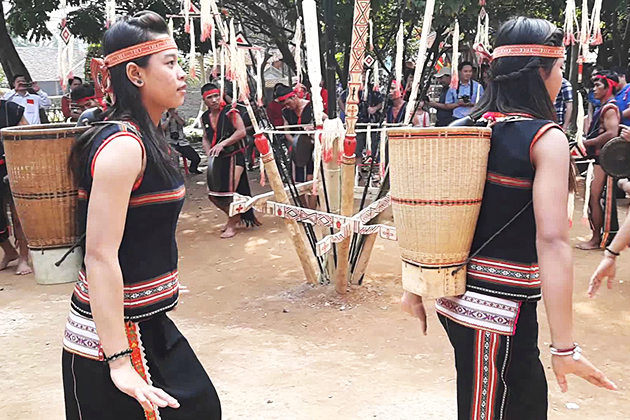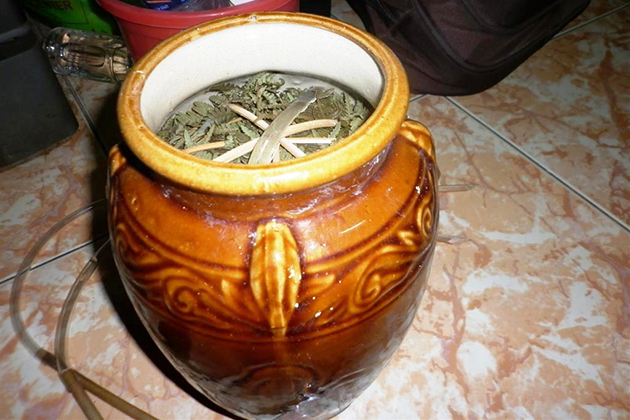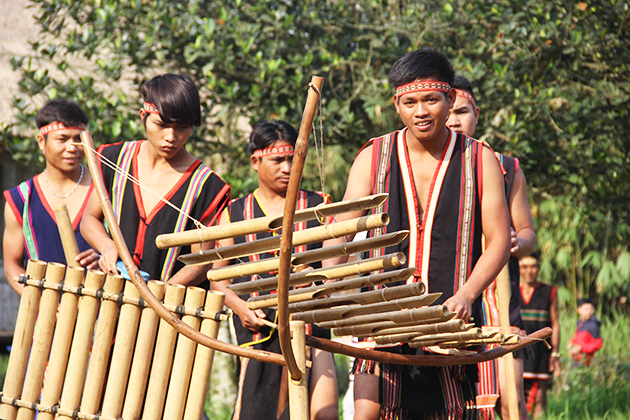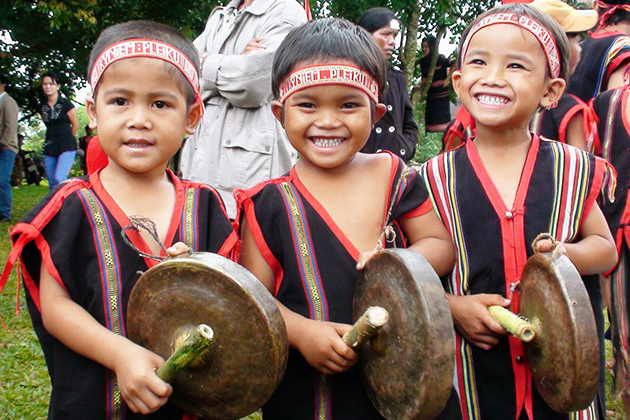The Gia Rai ethnic is one of the early residents of Vietnamese People gathering at the Highland Central. The Gia Rai is also known by other names such as Gio-Rai, Cho Rai, To Buan, Hobau, Hdrung, Chor. With over 400 thousand people, this is the biggest group speaking the language of Austronesian languages.

Economic Features of Gia Rai Ethnic Group
The Gia Rai people live mainly on shifting cultivation. Ordinary rice is the main food crop. Farming tools are still simple. The most important tools is the knife to cut trees, forests, hoe to dig the land, and sticks to dig holes when sowing the seeds. Besides farming, the Gia Rai people also focus on breeding. Cattle, pigs, dogs, chickens are the main livestock. In the past, the Gia Rai has a fairly large herd of horses. The Gia Rai also feed the elephants. Men are skilled in knitting baskets types, baskets, women are good at weaving loincloth, blanket, and cloth. Moreover, hunting, gathering, fishing is the economic activity having significantly meaningful for their life.
Customs & Habits of Gia Rai Ethnic Group
The inhabitants are concentrated in the Central Highlands province Gia Lai, Kontum, and Dak Lak. The Gia Rai lives in the village (ploi or bon). The traditional house is the longhouse, but these are house on stilts, directing to the north. In the village, the headman and the elders have great prestige and role in leading in the community. The “Rong” house is the biggest house in the village, was the place for all common activities.
Rice is the staple food, corn is food additives. Salt and chili dishes are indispensable in the diet of the Gia Rai. The Gia Rai people's food consists mainly of vegetable soup, sometimes added meat, fish. In addition to “ruou can” (wine drunk out of a jar through pipes) is indispensable. Both the Gia Rai youth and women smoke. The most unique part of the Gia Rai cuisine is the culinary tomb.

Unlike other ethnics, the Gia Rai have traditional matriarchate. Women are free to choose to love and initiative in marriage. After the wedding, the men stay at the home with his wife. In contrast, married daughters are separate from parents. The children follow the mother’s family. In society, men play a more important role, but in house, women are getting better in advance.
Cultures of Gia Rai Ethnic Group
The famous epics, tales such as " Dam San", "Xinh Nha" play an important part in the folk culture ... the Gia Rai ethnic group is also unique in the art of playing the gong, musical instrument T-rung, Tung-nung, Krong -put. These are traditional Vietnamese instruments connected closely to the spiritual life of the people.

Costumes of Gia Rai Ethnic Group
There are distinctions in the plastic style and decoration of each group. But in general, there have some the same. Men wear an indigo scarf around the head and then let into one ear, or neatly wrapped like the Kinh. Generally, the traditional clothes of Gia Rai men are loincloths. Women with long hair neat bun on the nape or wrap top. The skirt used for women is long, tube-shaped, and made from large clothe wrapping around the body and tied under a belt. The shirt is short, long-sleeved, or sleeveless and has the same pattern with the skirt.



